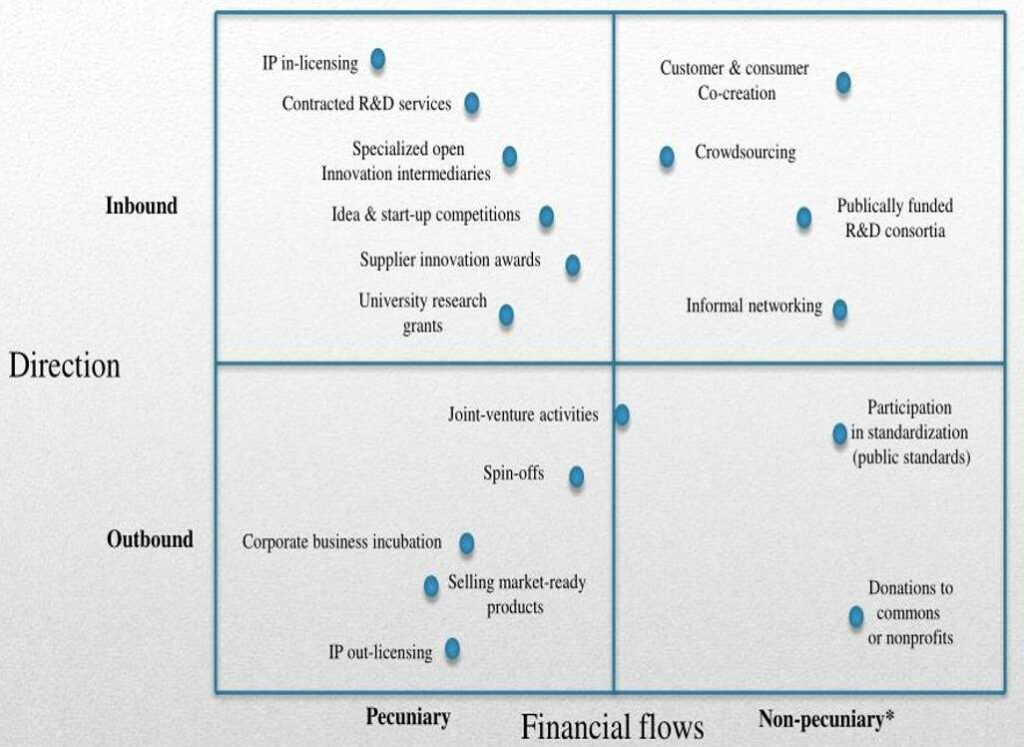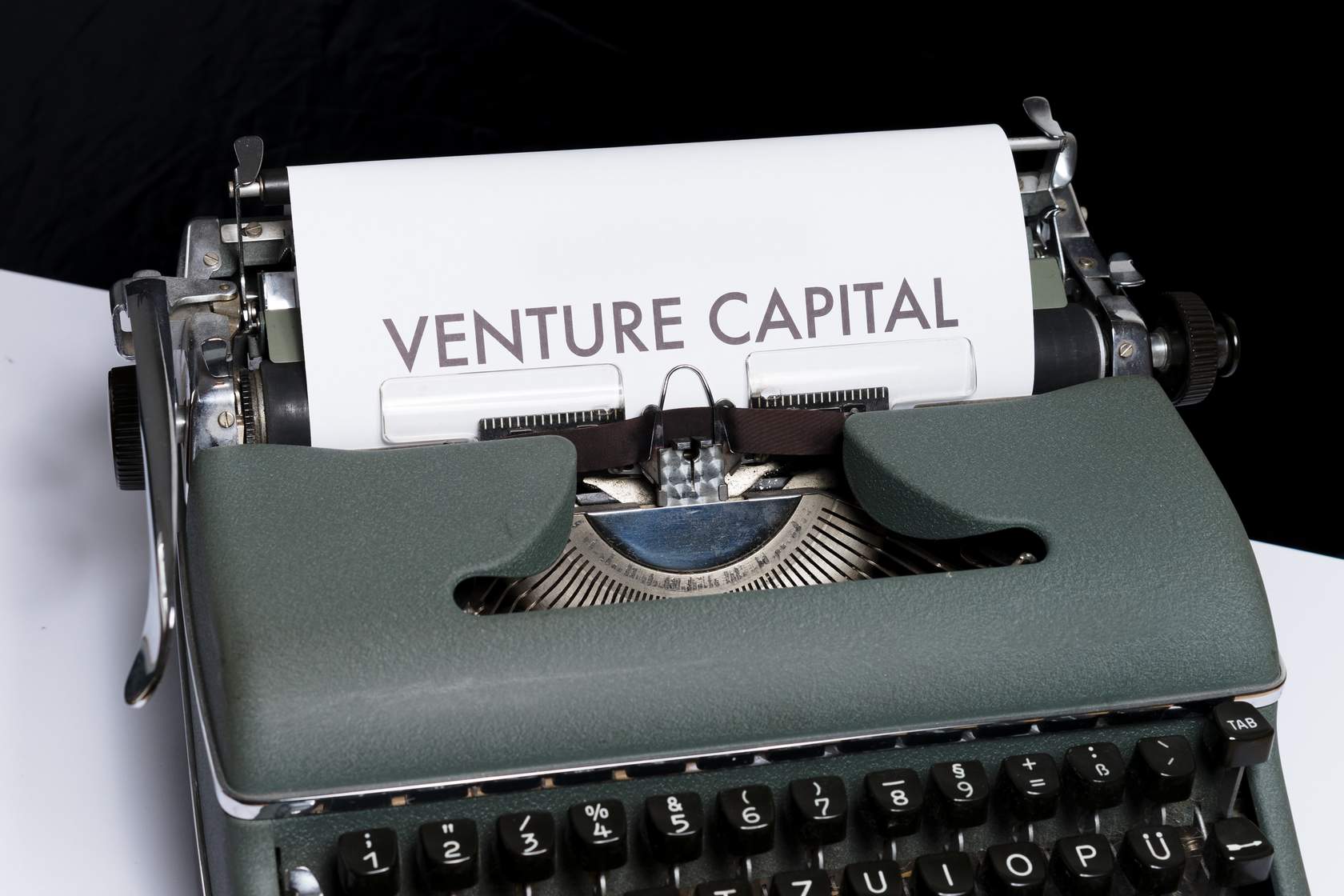Types of open innovation
Inbound and outbound innovation
When collaborating with others, you can bring ideas, knowledge or products from the outside to the internal organization (inbound innovation) and vice versa (outbound innovation). These processes can be financially driven (as shown on the horizontal axis in the picture below) and require formal (legal) agreements.

Forms of business models
Open Innovation arises gradually; from exchanging more and more knowledge with customers or suppliers to investing in joint ventures with complementary companies or developing computer operating systems such as Linux together with the “crowd”.
The degree of open innovation involves different business models. In the manufacturing industry, cooperation between companies goes from traditional cooperation through cost-based models (hourly invoicing). Increasingly, performance-based collaboration is occurring by means of performance-based models. In this process, more and more responsibility and risks in the innovation process are taken by suppliers. As a company you have to make strategic choices in what you want to achieve and with whom. The next module explains this in more detail: see M4-M8.
Cost-based model
Suppliers are rewarded for their efforts in terms of manpower and material use.

Performance-based model
Suppliers are rewarded if they succeed in achieving predetermined goals agreed upon with the customer. Best Value Procurement and Vested are examples of methods to achieve performance-based business models. The differences are shown in the picture below:

Revenue-based model
Suppliers are rewarded by means of ‘revenues’ for investments in product development, either by developing their own products or by sharing the risks of developing a product. The entrepreneurial supplier takes a lot of risk, but also shares in the profits.

